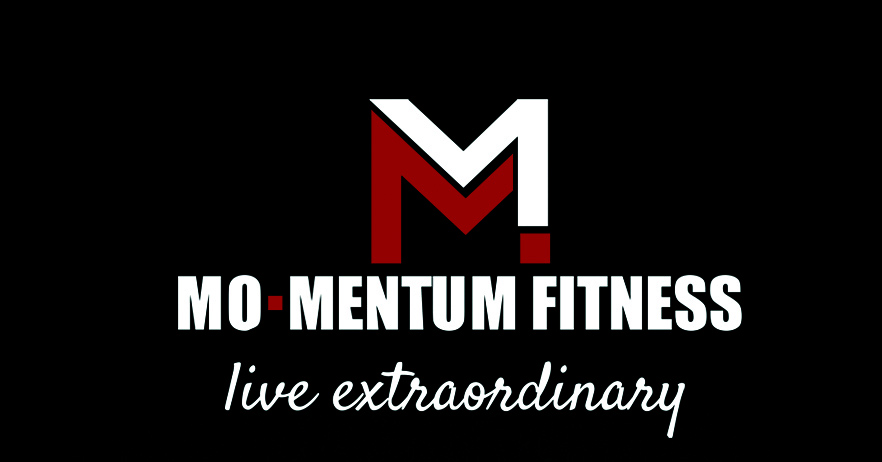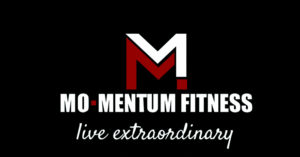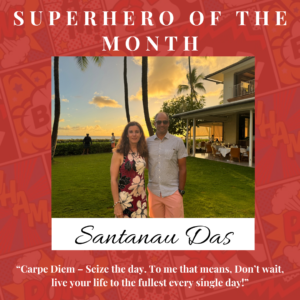[vc_row][vc_column][vc_column_text]
By Amanda Mittleman, M.S.
The What You Need To Know About Your Bones series is meant to provide you with basic information about your bones and why you should be thinking about your bones today. Part I is focused on facts about osteoporosis while Part II dives a little more in depth into the anatomy of your bones. This blog will provide you with tips for the best options for nutrition and some supplements that will help you to build strong bones and keep them strong for a lifetime.
Calcium and Bones
When you think of strengthening your bones you probably think about calcium supplementation or drinking milk. Up until very recently most kids have been taught in school and by their parents to drink my milk to build strong bones. For many years, doctors recommended milk and calcium supplements as the best method for preventing osteoporosis. If your doctor still recommends drinking milk as the best method to get your calcium, you would do yourself a HUGE favor to find a doctor who has studied more recently than the 18th century. While calcium is VERY important for building strong bones, milk is NOT the best way to get your calcium and there are other VERY important factors that must accompany calcium supplementation to build those strong bones.
Research shows that women living several centuries ago, as far back as 12,000 years ago, had stronger bones (at the same ages) than women today. In fact, female bones found 12,000 years ago actually have up to 20 percent higher bone mineral density, than modern day women. Twelve thousand years ago, people did NOT drink milk after infancy! Asian and African cultures both consume very little milk or dairy (after their mother’s breast milk during infancy) and the fracture rates within these cultures are 50 to 70 percent lower than they are in the U.S. In fact, the industrialized countries that consume more dairy products than other countries actually have the highest fracture rates.
A huge body of research shows that diets high in milk AND even “calcium” supplementation do not decrease fracture risks. Calcium is very important for strong bones, but there are other essential factors that help calcium to build bones. In 2003, a Harvard study that looked at bone fractures among 72,337 women over the course of 18 years, concluded that milk and calcium intake were not associated with lowered risk of hip fracture. In a 2007, another Harvard study analyzed seven trial studies that followed more than 170,000 women for several years and also found no association between calcium intake and decreased risk of hip fracture.
Calcium Bones And Baking Cakes
Making your bones stronger is like baking a cake. You need the right ingredients but you also need to bake a cake. You can have all of the right ingredients but if you don’t bake the cake, you won’t get a cake. The same is true for making strong bones. Calcium for your bones is essential, like eggs are for baking a cake. You must add your eggs to the cake. But if the recipe calls for 3 eggs and you add 15 eggs you aren’t going to have a “better” cake. And if you just add eggs but don’t bake the cake, you STILL won’t get a cake. You can take all of the calcium you want, but if you don’t stimulate bone cell growth by moving your body, you will end up with very expensive, bright yellow urine that is full of calcium, and your bones won’t be any stronger.
Calcium is not just important for your bones; it also regulates vital processes in your body ranging from the clotting of your blood, the beating of your heart to the firing of your nerve cells. Every day more than 300 mg of calcium is dissolved from our bones. This is normal because our bodies are constantly breaking down old bones cells and replacing those old bone cells with new bone cells. This is a delicate balance, and as soon your brain detects lower levels of calcium in your blood stream it sets off a series of biological reactions to pull calcium blood levels back up by sending the message to your kidneys to hold on to calcium and for your bone cells to break down more bone (the mineral storage place for calcium) for the calcium.
Calcium Is Only Part Of The Picture
Your bones are also mineral storage containers for your body. Minerals are essential for the healthy functioning of every cell in your body. Some of these minerals include calcium, magnesium, and phosphorous, but there are many more as well.
Vitamin D
Vitamin D is actually a hormone. One of the benefits of Vitamin D in the human body is that it helps your bones absorb calcium. If you don’t have enough vitamin D in your blood you won’t be able to use the calcium from your diet or supplements to make your bones stronger. Just a side note, adequate levels of vitamin D can also decrease hypertension. Vitamin D deficiency is a major factor in the pathology of osteoarthritis in addition to approximately 17 different cancers as well as heart disease, stroke, hypertension autoimmune disease, diabetes, depression, chronic pain, osteoarthritis, muscle weakness, muscle wasting, birth defects, periodontal disease, Parkinson ’s disease and more according to the Vitamin D Council (a nonprofit educational organization http://www.vitamindcouncil.org).
Vitamin D And The Sun
Here’s something you may not know and may surprise you. The vitamin D that your body makes from exposure to the sun (ultraviolet B or UVB) is FAR superior to vitamin D that you get from oral supplementation. Your body is designed to get vitamin D from the sun. In fact, this is the best way to raise your vitamin D levels. Our ancestors got their vitamin D from the sun for millions of years, and your body still thinks we are living millions of years ago. Exposure to outdoor sunlight is a much more reliable predictor of vitamin D levels in your body than your dietary intake. Vitamin D requirements vary enormously among individuals so oral supplementation is difficult to measure. It’s also possible to ingest toxic levels of Vitamin D from supplements; but it is impossible for sun exposure to lead to toxic levels of vitamin D. Sunlight by itself can bring your vitamin D levels to a healthy range.
That said, it’s still best to avoid midday sun and staying in the sun so long that your skin burns. Almost all skin cancers are associated with over exposure to the sun without adequate antioxidant protection but they are not associated with 20 to 30 minutes of morning or late after noon sun. Vitamin D reaches maximum levels in light skin within 20 minutes of exposure.
Dr. Christine Northrup suggests that you expose a large portion of your body to sunlight for about 10 to 20 minutes, WITHOUT SUNSCREEN (except for on your face), every day. And she suggests more time if you have darker skin. Early morning or late afternoon sun exposure is the safest. You can even get exposure to the sun with a 45-minute walk in shorts and a tank top during the warm months in the morning or the later afternoon. Our bodies can actually vitamin D for use during times of less sunlight. The more skin you expose means the quicker your body can make vitamin D. In fact, full body exposure for 15 to 30 minutes is the equivalent of an oral dose of 10,000 IU vitamin D.
How Lack of Nutrients & Highly Acidic Foods Chip Away At Your Bones Like Termites Eat Wood
Another key to preventing osteoporosis is to eat a low-acid diet, which will help you to maintain a slightly alkaline pH level in your blood. Grains, and other high glycemic foods (foods higher in sugar that also digest quickly) and too much animal protein all-together will make your blood more acidic. When your blood becomes to low on the pH scale (too acidic) your body will neutralize your blood by leeching some of the calcium compounds that are stored in your bones. Years and years of eating highly acidic foods and years and years of your body chipping away at your bone supply will result in osteoporosis. Tie this in with a sedentary lifestyle and you are well on your way to have brittle, thin bones earlier and earlier in your lifetime.
Colas And Your Bones
Soft drinks also have adverse effects on your health in many ways. The Framingham Osteoporosis Study (2006) found that cola was associated with lower bone mineral density in women. This could be because women who drink cola (diet or regular) tend to eat more processed foods or because of the phosphoric acid in cola, or both factors. Regardless, replacing colas with water, mineral water or green tea is going to improve many other factors in your health as well.
Caffeine
Caffeine increases the rate that you pee out calcium. So It’s best to limit yourself to one or two cups of coffee a day.
Amy Lanou Ph.D. in her book, Building Bone Vitality: a Revolutionary Diet Plan to Prevent Bone Loss and Reverse Osteoporosis (McGaw-Hill, 2009), says that for healthy bones your blood needs to maintain a slightly alkaline pH level (a measure of acidity or alkalinity in your). You can achieve this by eating five times the amount of vegetables and fruits than you eat in grains, animal protein and sugars. This means for every one serving of animal protein, grain or high glycemic food, you need five servings of veggies (and some fruit-don’t eat five servings of fruit).
Although your body can get calcium from cow’s milk, it is highly acidic. That’s like taking one step forward to take two steps backwards. There are many other sources of calcium that are also more alkaline than milk.
Great Sources Of Calcium Include:
The best way to get enough calcium is through whole, clean foods.
| Food Source | Calcium Content | How Much? |
| Collard greens | 268 mg | 1 cup cooked |
| Broccoli | 86 mg | 2 cups raw |
| Edamame | 101 mg | 1 cup raw chopped |
| Bok Choy | 74 mg | 1 cup shredded |
| Figs | 121 mg | ½ cup dried |
| Orange | 74 mg | 1 large orange |
| Sardines | 351 mg | 3.75 ounce-can |
| Canned Salmon | 232 mg | ½ can |
| Okra | 82 mg | 1 cup |
| Tofu | 434 mg | ½ cup |
| Almonds | 75 mg | 1 oz (about 23 whole almonds) |
| Sesame Seeds | 88mg | 1 TBS |
| Seaweed | 126 mg | 1 cup raw |
NUTRITION SUMMARY:
Bones are dynamic organs that thrive in a mineral-rich environment. If you eat a lot of refined foods, you are likely to have weak bones and bad teeth. Some basic nutritional recommendations are to:
- Follow a low-acidic diet that includes 12 or more servings of vegetables a day
- Don’t over do it on the protein (one or less grams of protein per pound of lean mass)
- Keep sugar to a minimum (less than 75 -100 grams per day if you can do less than that EVEN BETTER)
- Keep a food log at least one week out of every month to track what you are actually eating as compared to what you think you are eating.
One of the best ways to keep a food log is on your phone since you have your phone with you all of the time. Try the app MyFitnessPal. You can also checkout the My Fitness Pal website, which has a lot of great food tracking resources.
SUPPLEMENTS:
Any time you take a new supplement you should check with your doctor.
These suggestions are from Dr. Christiane Northrup in her book The Wisdom Of Menopause (Revised Edition): Creating Physical and Emotional Health During the Change.
Magnesium. Though calcium gets all the credit when it comes to bone health, magnesium is equally important. Magnesium is an essential component for the biochemical reactions involved in bone building. Even for people who eat clean, it is difficult to get enough magnesium in our world today. However, overconsumption of processed foods is usually the reason for extensive magnesium deficiency. Often times magnesium blood levels will appear to be normal, but the most accurate way to test for healthy magnesium levels is in the red blood cells. Signs of low magnesium are fatigue and depression. You get magnesium from organically grown vegetables, sea vegetables and turkey. Dr. Northrup generally recommends a magnesium supplement daily at a dose of 400 to 800 mg per day, depending upon the quality of your diet.
Vitamin D. Consuming adequate levels of vitamin D are associated with lower risk of hip fractures in postmenopausal women. Take at least 2,000 IU of vitamin D per day. However, direct sunlight exposure is the best way to get your vitamin D to optimal levels.
Beta-carotene. Take 15 mg per day. Beta-carotene is converted into vitamin A in the body. Vitamin A promotes a healthy intestinal lining, which is vital for optimal absorption of nutrients. It is also important for maintaining strong joints. Good food sources include, yellow and orange vegetables such as acorn squash and carrots and also in dark green leafy vegetables are full of beta-carotene.
Vitamin C. The recommended dose of Vitamin C is 2,000 mg per day. Vitamin C assists in collagen synthesis and repair (in bones and skin).
Manganese. This nutrient should be supplemented in the form of manganese picolinate. The recommended dose is 15 mg per day.
Calcium. Taking calcium without vitamin D is almost useless. That said, calcium supplementation is valuable. Take 1,000 to 1,500 mg per day in the form of aspartate, citrate, or lactate. You can take less if you are getting enough calcium from your food (See Great Sources of Calcium List above.) Don’t take tums for Calcium. Although the calcium carbonate found in Tums has been shown to increase bone density, it also creates an alkalizing effect on your stomach acid, which inhibits calcium absorption and increases the risk of kidney stones.
Boron. Boron is a trace element found in fruits, nuts and vegetables. It has been found to reduce urinary calcium loss and to increase serum levels of 17-beta estradiol (the most biologically active estrogen); both of these effects help your bones. The minimum daily dose of boron needed is about 2 mg per day. This can be easily met with a diet rich in fruits, nuts and vegetables; supplements can be taken up to 12 mg per day.
Natural progesterone. Progesterone’s role in bone metabolism is well documented but frequently overlooked. First, check with your doctor if you are in perimenopause. Dr. Northrup often recommends one-quarter to one-half teaspoon of two percent cream daily on the skin.
References
Bischoff-Ferrari, H.A., et al., (2007). Calcium intake and hip fracture risk in men and women: a meta-analysis of prospective cohort studies and randomized controlled trials, American Journal of Clinical Nutrition, vol. 86, no. 6 (December), pp. 1780-90.
Chappard, D., et al. (1988). Spatial distribution of trabeculae in iliac bones from 145 osteoporotic females. Maturitas, 10, 353-360;
Cummings, S. et al. (1985). Epidemiology of osteoporosis and osteoporotic fractures. Epidemiology Review, 7, 178-208.
De Souze, et al. (1998). High frequency of luteal phase deficiency and anovulation in recreational women runners: Blunted elevation of follicle0stimulating hormone observed during luteal-follicle-stimulating hormone observed during luteal-follicular transition. Journal of Clinical Endocrinology and Metabolism, 83(12),4220-4232.
Eaton, S. et al. (1991). Calcium in evolutionary perspective. Am J Clin Nutr, 54, (Supp.), 281S-287S.
Feskanich, D., Willet, W.C., Colditz, G.A., (2003). Calcium, Vitamin D, Milk Consumption, and Hip Fractures: A Prospective Study among Postmenopausal Women, American Journal of Clinical Nutrition, vol. 77, no. 2 (Feb.), pp. 504-11.
Holick, M. F. (1995). Environmental factors that influence the cutaneous production of vitamin D. Am J Clin Nutrition, 61, (sup. 3) 638S-645S .
Lanou, Amy (2009). Building Bone Vitality: a Revolutionary Diet Plan to Prevent Bone Loss and Reverse Osteoporosis (McGraw-Hill)
Lanyon, L.E. (1993). Skeletal responses to physical loading. In G. Mundy & J.T. Martin (eds.), Physiology and Pharmacology of Bone. 107, 485-505. Berlin: Springer-Verlag.
Lees, B. Et Al. (1993). Differences in proximal femur bone density over two centuries. Lencet, 341, 673-675.
Mittleman, A., (2009). Bone Mineral Density And Body Composition Differences Among Postmenopausal competitive athletes, Habitually Active and Sedentary Women. California State University, Long Beach. Thesis. (Jan.)
Northrup, C. (2012) The Wisdom Of Menopause (Revised Edition): Creating Physical and Emotional Health During the Change. Bantam Books.
Ronn, T. et al. (2006) “A six months exercise intervention influences the genome-wide DNA methylation pattern of human adipose tissue.” PLos Genetics 9 no. 6.
Tucker KL. et al. (2006). Colas but not other carbonated beverages, are associated with low bone mineral density in older women: The Framingham Osteoporosis Study. Am J Clin Nutr., 84, 936-856.
Vieth, R. (1999). Vitamin D supplementation, 25-hydroxyvitamin D concentrations, and safety. Am J Clin Nutr, 69, 842-856.
[/vc_column_text][/vc_column][/vc_row]







